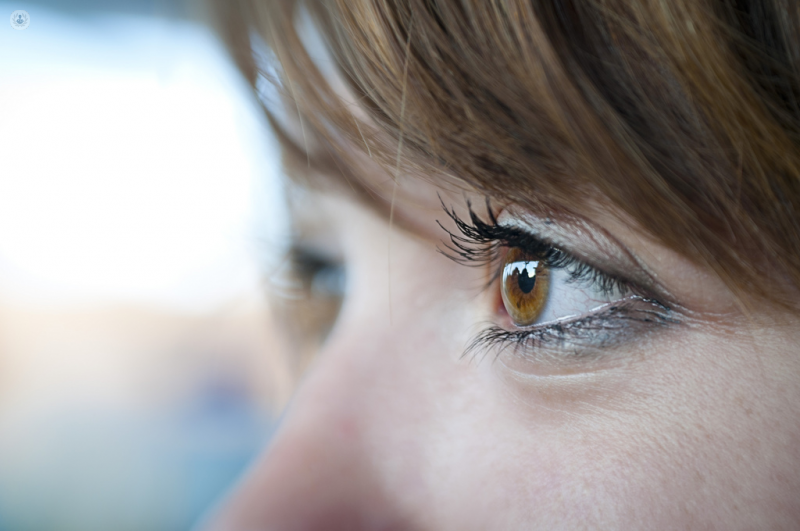


What is glaucoma?
Glaucoma is an eye disease that causes the progressive loss of nerve fibres in the optic nerve, whose proper functioning is essential for clear vision.
- Primary open-angle glaucoma or simple chronic glaucoma: this is the most common type of glaucoma, affecting approximately 80% of patients with this disease.
- Angle-closure glaucoma or narrow-angle glaucoma
- Normal, low-voltage, or normotensive stress glaucoma
- Congenital glaucoma : occurs in new-borns or young children where the drainage system of the eye has developed incorrectly or incompletely during the prenatal period.
- Secondary glaucoma : it appears associated with other visual problems (tumours, cataracts, inflammations, etc.) or is caused by an external agent (use of certain drugs).
Prognosis:
Depending on the type of glaucoma, you will have one prognosis or another:
- Open-angle glaucoma cannot be cured, although it can be treated as directed by a specialist.
- Angle-closure glaucoma is understood to be a medical emergency, so immediate treatment can save the patient's vision.
- Babies with congenital glaucoma usually recover well when the surgery is done early.
- The outlook for secondary glaucoma depends on what is causing the condition.

Glaucoma symptoms
Depending on the type of glaucoma you have, you will feel some symptoms or other:
Open-angle glaucoma:
- Most people have no symptoms
- Once vision loss is noted, the damage is already severe
- There is a slow loss of side (peripheral) vision (also called tunnel vision)
Angle-closure glaucoma: Symptoms may come and go at first or get worse all the time. You can feel:
- Sudden, severe pain in one eye
- Blurred or decreased vision, called "blurred vision
- Nausea and vomiting
- Rainbow-like halos around lights
- Redness of the eyes
- Sensation of swelling in the eye
Congenital glaucoma: Symptoms are almost always noticed within a few months of age in children:
- Opacity in the front of the eye
- Enlargement of one or both eyes
- Redness of the eyes
- Sensitivity to light
- Tearing
Medical tests for glaucoma
The only way to diagnose glaucoma is to have a complete eye exam.
- Tonometry : Test to check eye pressure
- Gonioscopy : An exam in which a special lens is used to look at the angle of the eye.
- Laser-scanned pictures or images of the inner part of the eye (optic nerve images)
- Laser-scanned images of the angle of the eye
- Examination of the retina
- Pupillary reflex response test , i.e., how the pupil responds to light
- Three-dimensional view of the eye : slit-lamp examination
- Evaluation of visual acuity , i.e., clarity of vision
- Visual field evaluation : visual field measurement
What causes glaucoma?
Among its causes, which are many, vascular diseases and high blood pressure are the most important.
Open-angle glaucoma: the cause is unknown. This type of glaucoma tends to run in families. People of African descent are also at higher risk for this disease.
Angle-closure glaucoma: Eye drops to dilate the eyes as well as certain medications can trigger an acute glaucoma attack.
- If you have had acute glaucoma in one eye, you are at risk for it in the second eye. Your health care provider will probably treat your second eye to prevent a first attack in that eye.
Secondary glaucoma occurs due to a known cause. Both open-angle and closed-angle glaucoma can be secondary when caused by something known. Causes include:
- Drugs such as corticosteroids
- Eye diseases such as uveitis (an infection of the middle layer of the eye)
- Diseases such as diabetes
- Eye injury
Congenital glaucoma occurs in new-borns from an inherited cause
Can glaucoma be prevented?
As this is a generative condition, it is important to make an early diagnosis. In this sense, specialists advise eye exams from the age of 40, although the age of greatest risk for glaucoma is established from the age of 60. In addition, a complete eye exam can help detect open-angle glaucoma early, when it is easiest to treat. Regular eye exams are also recommended as directed by your doctor.
Treatments for glaucoma
Although the vision that is diminished by this disease cannot be restored, glaucoma progression can be prevented by lowering intraocular pressure. This can be done, depending on the patient and medical recommendations, with the administration of drugs, with laser techniques or with non-invasive surgery.
Treatment depends on the type of glaucoma the patient has:
Open-angle glaucoma:
- Eye drops
- Pills to decrease pressure in the eye
- Laser therapy: A painless laser is used to open the channels through which the fluid exits. This treatment is applied when the drops have not worked.
- If the drops and laser treatment do not work, you may need surgery.
Angle-closure glaucoma :
- You may be given drops, pills, and medicines through a vein (intravenously) to lower your eye pressure.
- Some people also need an emergency operation, called an iridotomy. The doctor uses a laser to open a new channel in the iris. Sometimes this is done with surgery. The new channel relieves the attack and will prevent another attack.
Congenital glaucoma :
- By surgery: performed under general anaesthesia
Which specialist treats glaucoma?
Ophthalmologists are responsible for preventing, diagnosing and treating diseases that affect the eyes and the visual capacity of the patient, such as glaucoma. The eyes are the essential organ of vision and are susceptible to many abnormalities throughout life. Ophthalmology is responsible for preserving the patient's visual capacity, through medical treatment techniques, surgery or with the help of external elements such as glasses or contact lenses.